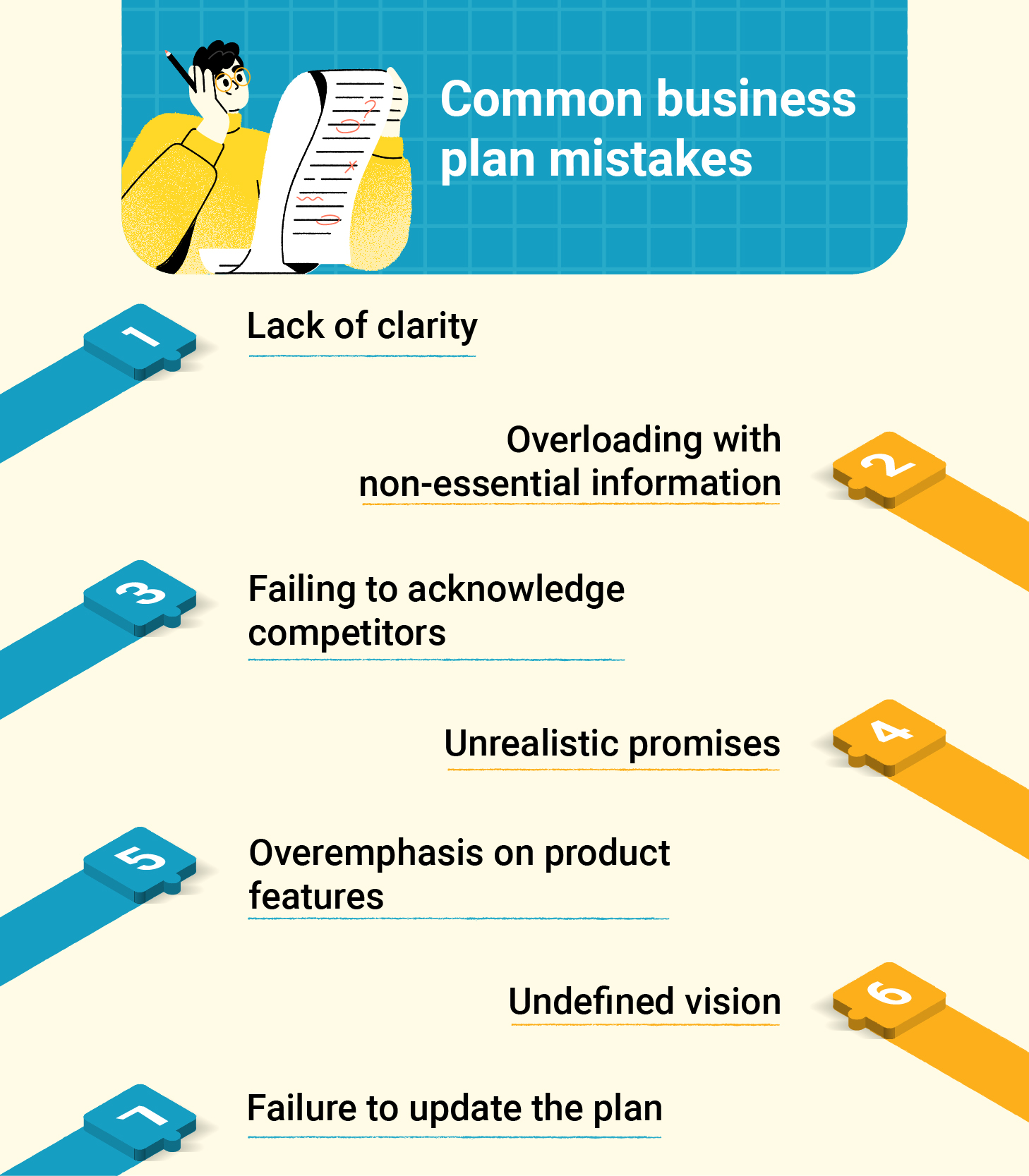Imagine you begin with the construction of a house and then suddenly become clueless about what is next as soon as you have the foundational pillars installed. Wouldn’t it be annoying? This happens when you start something without planning for it beforehand. The same applies when you are operating a business aimlessly without any pre-prepared roadmap. Having a business plan, however, is not just about writing a document for namesake. Instead, it is your blueprint to success that outlines a vision for the future, rallying employees and investors.
In this blog, we’ll demystify the nine key parts of a winning business plan to help you build a crystal clear and actionable roadmap for your business. This is your first step towards sustainable success, whether you’re just getting started or scaling up.
What is a business plan?
A business plan is a formal strategic document that serves as a tool to define a clear vision and set of actions in an endeavour. It helps chart the course of growth, frames your management and operational strategies and can help attract investors by presenting the existing and projected scenario for your business. It is a powerful resource, providing a step-wise approach towards the formation of your company.
Why focus on the components of a business plan?
Writing a business plan isn’t just about box-ticking; it’s about creating a tool that defines and adds value to every stage of your journey. By exploring the key components of a business plan, you can easily:
- Define your vision: Developing a plan in written form ensures more clarity, helping you articulate your goals better.
- Prepare for challenges: Planning beforehand helps identify risks and solutions in advance.
- Approach investors: A solid plan reflects both professionalism and expected profitability, which investors look for.
- Manage growth: With a clear roadmap, scaling becomes systematic.
Remember, a well-crafted plan is an asset you can return to repeatedly, adapting it as your business evolves.
Benefits of writing a business plan
Still wondering why you need a business plan? Here are some undeniable benefits that you get exposed to when you have a plan ready:
1.Attract investors
Investors want to know whether their money is in safe hands. A business plan provides:
- Evidence of market opportunity
- Clear financial projections
- Confidence in your leadership and strategy
- Your growth potential
2.Handle complexities
As your business scales, so do complexities. A business plan helps you:
- Prioritise resources effectively
- Align teams with your overarching goals
- Stay adaptive while maintaining focus
3.Mitigate risks
A detailed plan lets you anticipate challenges and develop contingency strategies, ensuring smoother operations even in the event of surprises and shocks.
4.Build confidence
Writing a business plan instils a sense of preparedness. Whether you’re pitching to investors or hiring new employees, you’ll approach every task with greater clarity and conviction.
9 key components of a winning business plan
By now, you must have understood why you must have a business plan, to begin with the formation of your venture and then take it forward according to the roadmap. So, guys, it’s time to explore the nine key components to have an unbeatable business plan. Let’s check them out:
1.Executive summary
The executive summary is your business’s elevator pitch. It’s the first thing investors see, so it should be clear, concise, and compelling. Here, you summarise your mission, the problem your business solves, your target market, and key financial projections. Although it appears first, it is recommended to write this section when your understanding of the business is the clearest.
2.Company description
This section explains what your business is about—what you do, who you serve, and why you’re unique. Highlight your business model, the problem you’re solving, and your value proposition. Investors will want to know what sets you apart from your competitors and how you plan to achieve long-term goals and success.
3.Market analysis
Investors need to see that your business is positioned in a promising market. The market analysis should include:
- Industry overview: Key trends, growth potential, and market size.
- Target audience: Detailed information about your customers—demographics, behaviour, and pain points.
- Competitive landscape: Identify competitors and explain how you’ll differentiate yourself.
- Supporting data: Provide data and research to back your claims and demonstrate a clear demand for your product or service.
4.Organisation and management structure
A strong team is a must for any business chasing success, and this team is its ultimate asset. Under this section, outline the organisational structure, introduce key team members, and highlight their roles, responsibilities, and relevant experience. Over here, you have a chance to show how your team is capable of executing the plan. If applicable, include advisors or mentors who add credibility to your business.
5.Products and services
This section details what you’re selling and how it addresses customer needs. Explain the features and benefits of your products or services, and highlight what makes them unique in the market. Whether it’s a physical product, digital service, or innovative tech, this is where you demonstrate your value proposition. Additionally, describe the product lifecycle and any plans for future updates or new offerings.
6.Marketing and sales strategy
Your marketing and sales strategy outlines how you will reach and convert customers. Key elements include:
- Pricing: Explain your pricing model and how it aligns with your market position.
- Sales plan: Describe your sales process—direct sales, online store, partnerships, etc.
- Marketing channels: Identify the channels you are planning to use to promote your business, such as social media, email marketing, and SEO.
This section should also include how you plan to retain customers and turn them into repeat buyers.
7.Funding Request
If you’re seeking funding, this section is crucial. Clearly state how much capital you need, why you need it, and how you’ll use the funds. Break down the allocation into categories such as product development, marketing, or hiring. If you’re offering equity or seeking a loan, clarify the terms and the potential return on investment for investors.
8.Financial Projections
Investors want to know whether your business can generate profit. Include detailed financial projections for the next three to five years using:
- Income statement to show projected revenue and expenses.
- Cash flow to indicate anticipated cash inflows and outflows.
- Balance sheet to list the assets, liabilities, and equity.
- Break-even analysis to depict the expected time by when your business would become profitable.
Support these projections with data and market research, and ensure they are realistic to build investor confidence.
9.Appendix
These include any additional documents that you can add to your business plan. This might include:
- Resumes of key team members
- Data supporting your analysis and information from market research
- Intellectual property patents, permits, and licences
- Supporting materials such as product photos.
Your appendix, which is similar to the extra evidence and detail that you add to your presentation during a pitch, enhances the winning chance of your plan by providing investors with more evidence and deeper insights into why your business is likely to succeed. Organise all of this and ensure everything comes with an easy-to-access reference.
Tips for writing a winning business plan
Writing an effective business plan sounds easy, but it’s not. Below are some quick tips that you must follow while developing your first blueprint.
- Start small: Begin with a rough draft and refine it over time.
- Use visuals: Infographics, charts, etc., are easier to read and provide more engagement for your plan.
- Be realistic: An over-exaggerated projection is never a good idea. Investors know where you are over-presenting figures.
- Seek feedback: You should share your plan with mentors, or industry experts and be open to constructive input or feedback from their end.
Common mistakes that should be avoided
- No generalisation, be specific: Do not use vague statements—define clearly your product, market, and value proposition.
- Avoid overshowing, and keep it concise: Don’t overload your plan with non-essential information; instead, stay on point.
- Don’t escape, acknowledge competition: Always recognise your competitors and explain how you are different.
- No fake promises, state strategies: Prove how you will bring in and retain customers to drive growth. This is where you should outline a clear marketing and sales strategy.
- Don’t talk about product features, focus on customers: Show that your product or service solves real customer problems through its features.
- No boasting, define your vision: Clearly articulate your long-term goals and the strategy to achieve them.
- Don’t go outdated, update regularly: Continuously refine your plan as your business evolves and market conditions change.

Conclusion
Crafting a business plan might seem daunting, but remember: every well-established business has begun with a pre-planned outline. When you pay attention to these nine elements, you’re not drafting a piece of paper but outlining the foundation of your dream business.
Frame it as a step-by-step process, and let it incorporate your passion, purpose, and commitment. A quality business plan is a record of the courage of a business owner. It segments your dream into smaller steps, which is your first foot forward to establishing an unbeatable business.
Your vision is waiting—let’s bring it to life!










